Do you have the skillsets to deal with this situation to apply deadly force to store your life?
What if your injury has rendered your dominant hand immobile?
The first question is: exactly whereisthat pistol your one remaining hand must now reach?
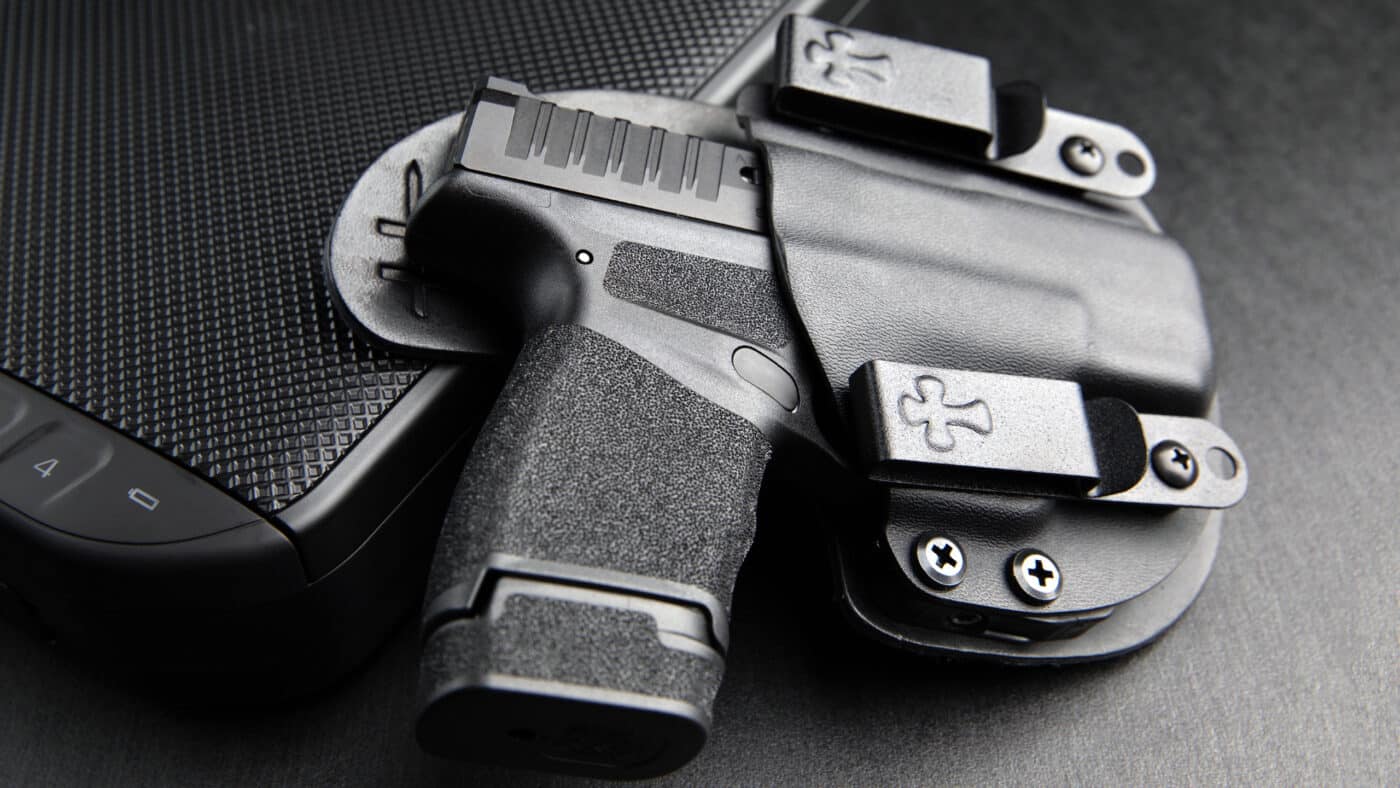
In today’s article, Massad Ayoob explains and demonstrates how to execute an emergency draw of a handgun in a safe manner. Any training you do should be with a replica or unloaded firearm.
The Solutions?
Last time I saw gunfighting guru John Farnam, he was carrying twin 9mms, mirrored on each side.
However, most folks will have a single gun in a single spot, so lets start there.
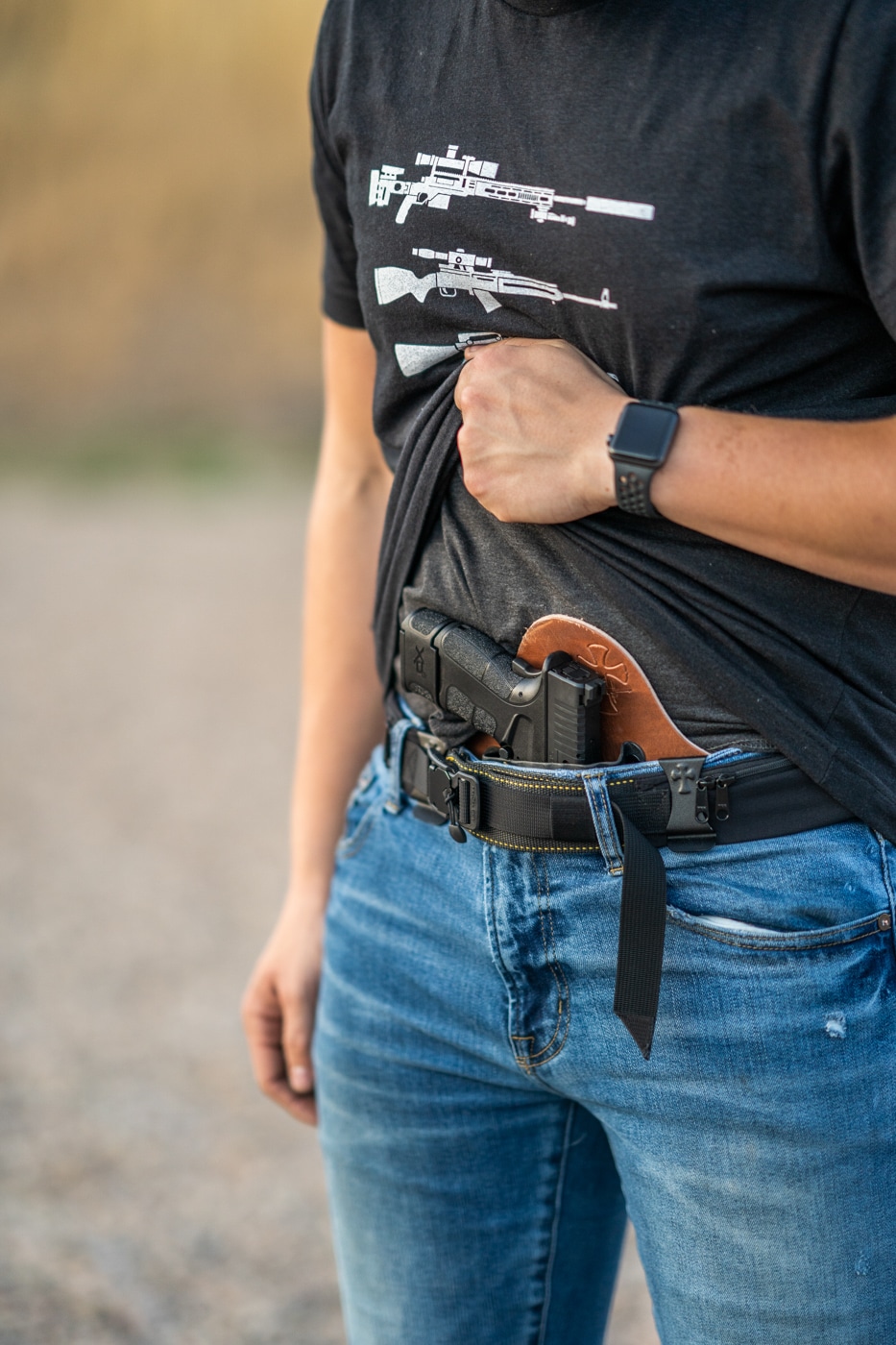
By its very nature, an emergency draw happens when things have gone very wrong. Author and trainer Massad Ayoob shows us the best methods.
The most readily accessible carry is cross-draw that is, butt forward on the hip opposite the gun hand.
(Keep the butt up until the muzzle is clear of you,thenturn the sights upright).
A More Traditional Take?
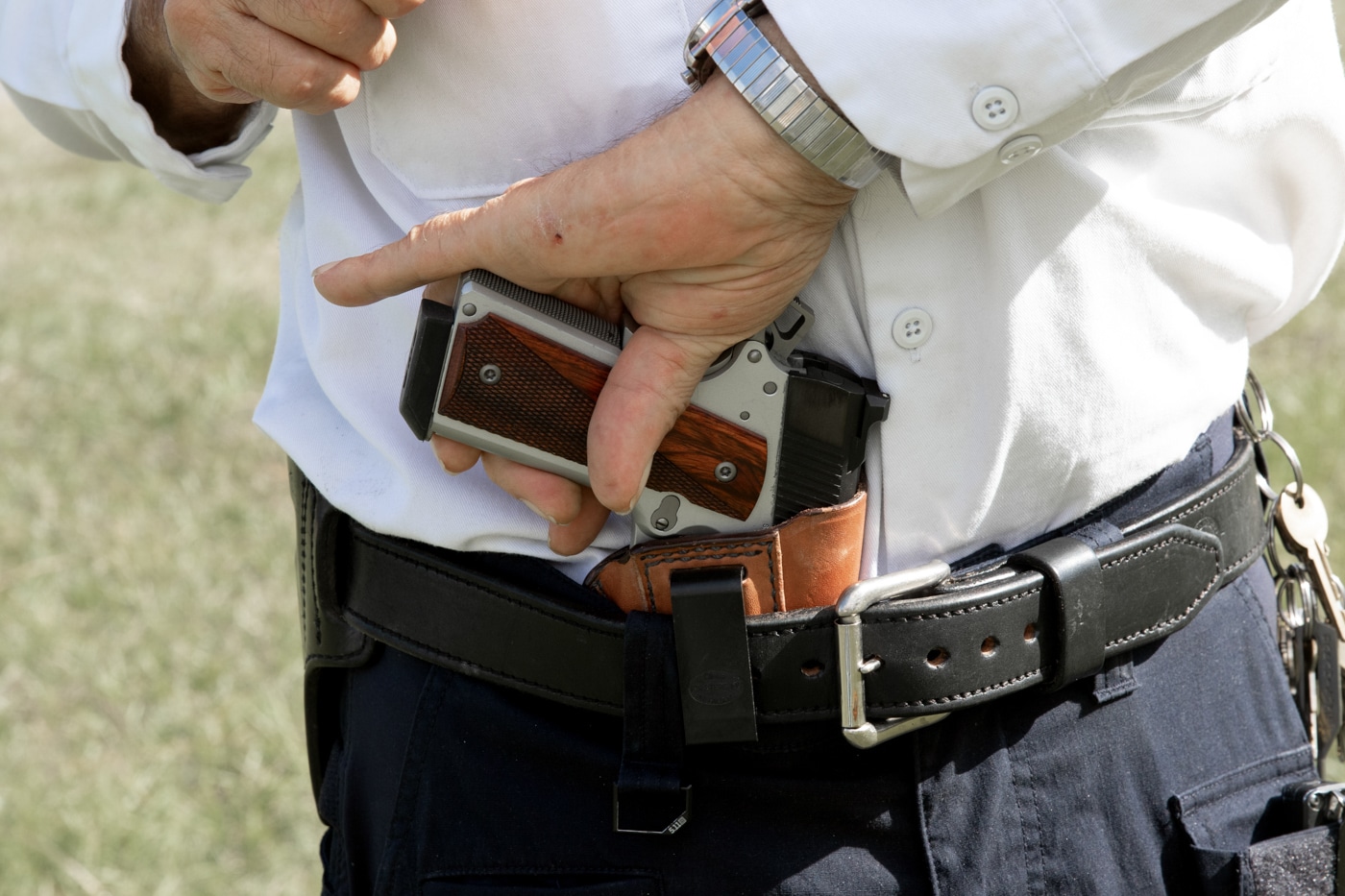
The author’s grasp and beginning of a cavalry draw for appendix carry (shown), cross-draw or shoulder holster. The pistol is an unloaded Springfield Ronin 9mm in a holster by Alessi. Image: Gail Pepin
The most common location for a belt gun is still strong side hip, or just behind it.
Lets look at that.
That will greatly reduce the length to which you must reach.
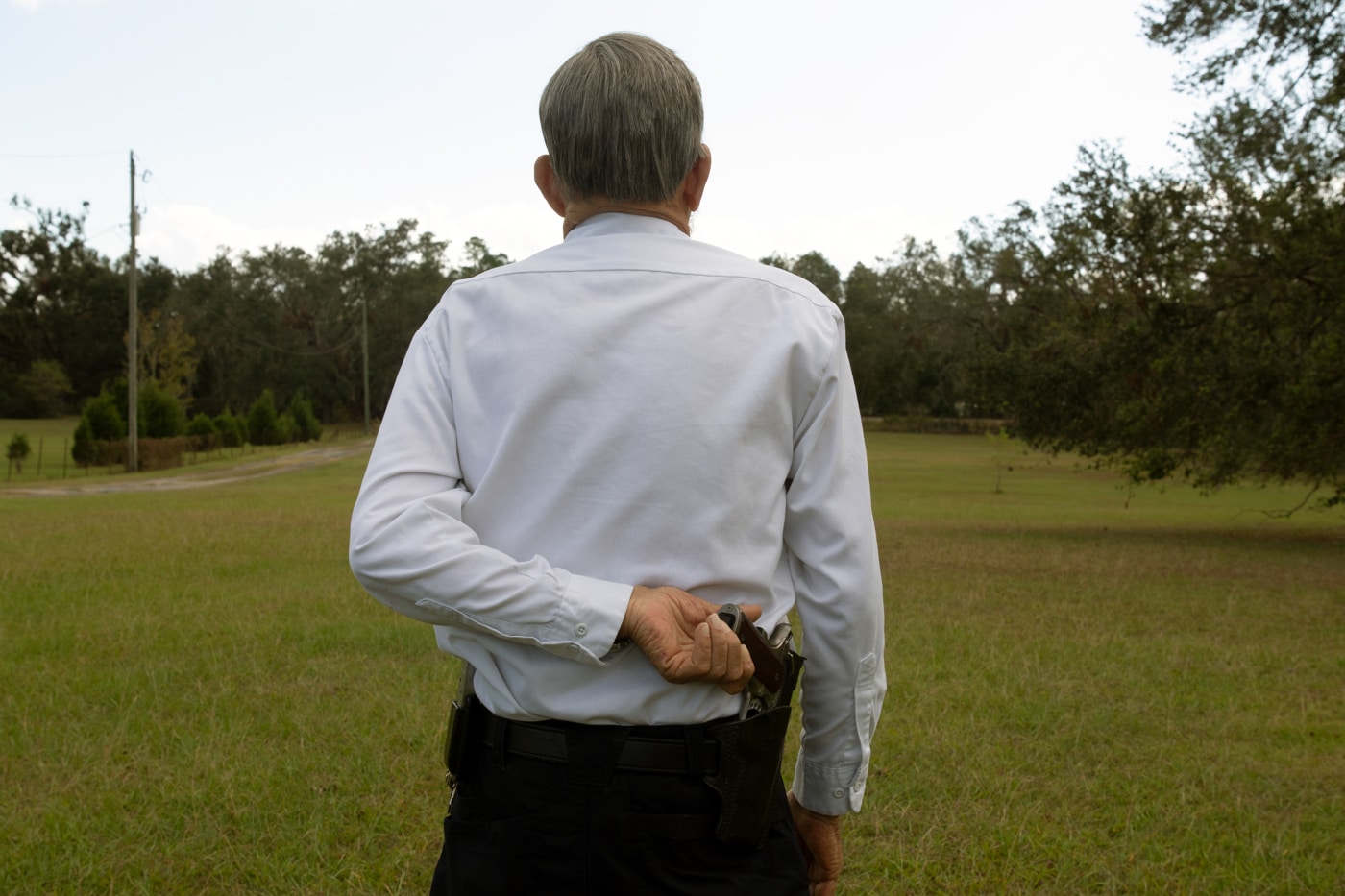
If you just stand there, you have limited hand reach behind your back… Image: Gail Pepin
Unless you areveryflexible, you wont be able to get a perfect drawing grasp.
Thats OK. For now, we just have to get the damn thing out of the holster.
Dont attempt to re-grip yet.
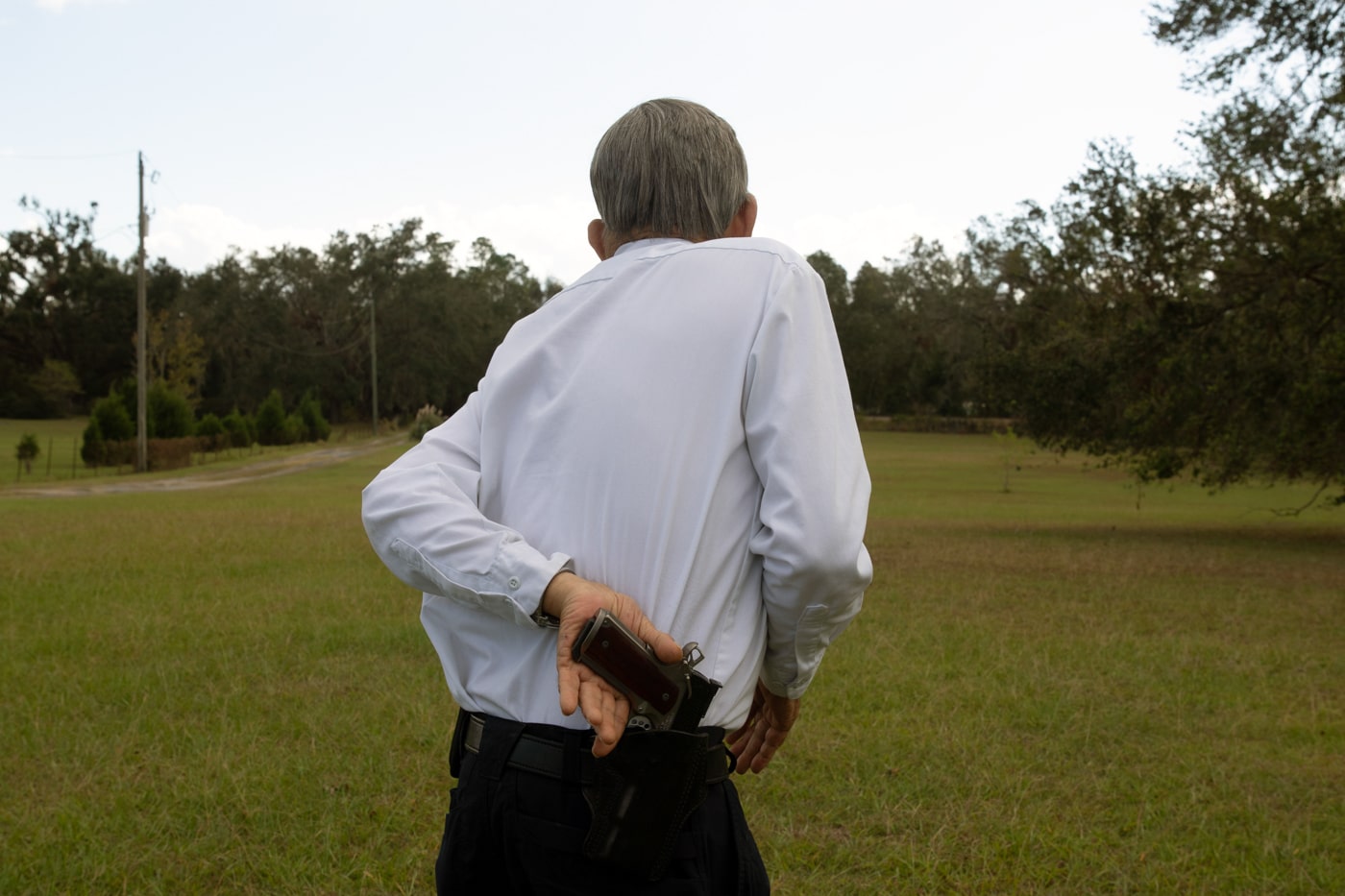
…but if you pivot the weapon toward the reaching hand and raise the wounded arm, look how much more range of movement you have… Image: Gail Pepin
Once the gun is in front of you,nowtake a proper grasp.
If there is a manual safety to disengage, you now benefit greatly from an ambidextrous safety lever.
Youre now ready to return fire.
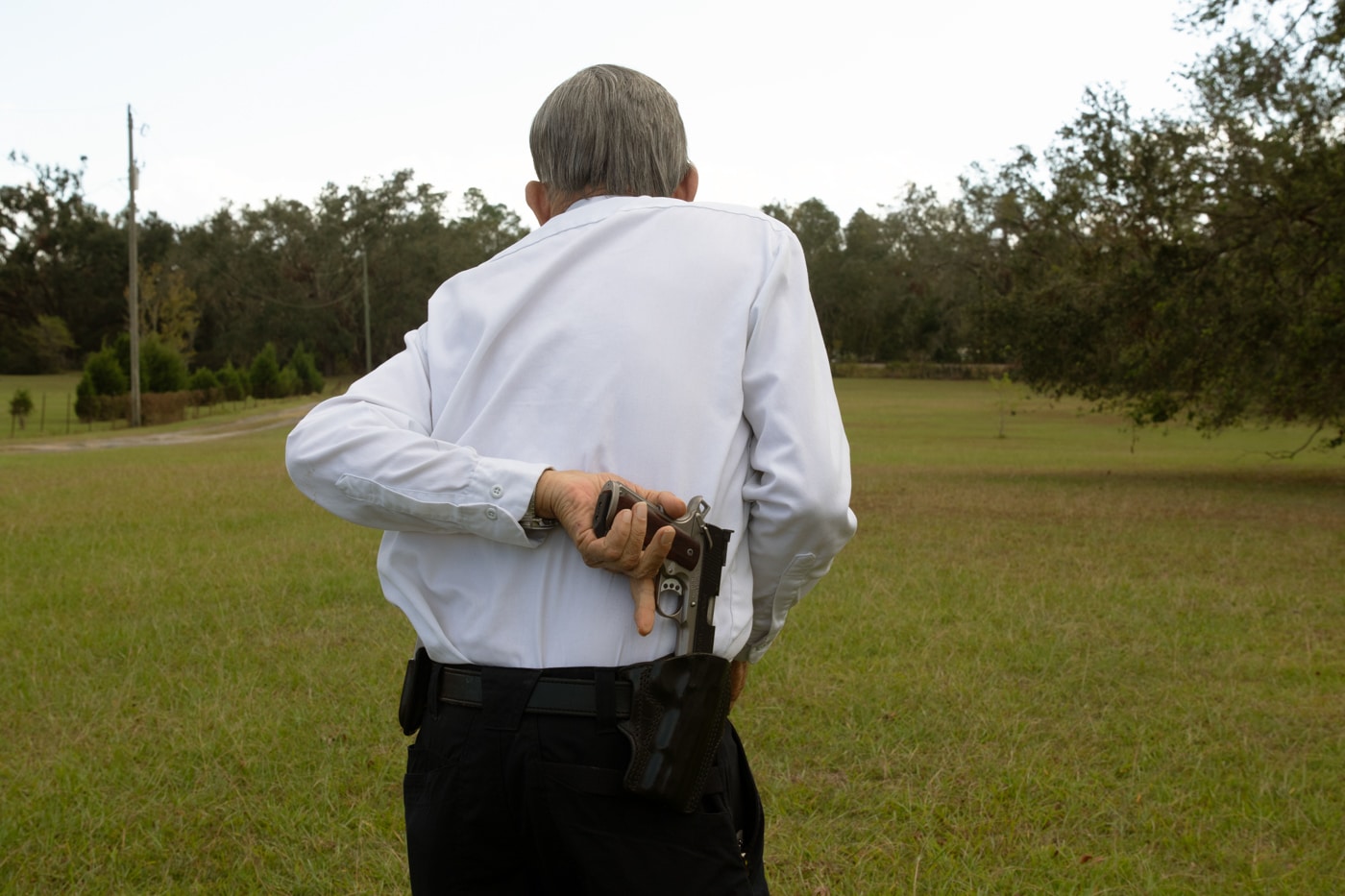
…push upward on the pistol, following the angle of the holster for easiest clearance… Image: Gail Pepin
Grasp the pistols grip-frame with your thumb, pointing toward the butt.
Now, keep the fingertipsunderthe gun to support its weight, and swing your palm across the butt.
Now it can be brought to bear against the threat with return fire.
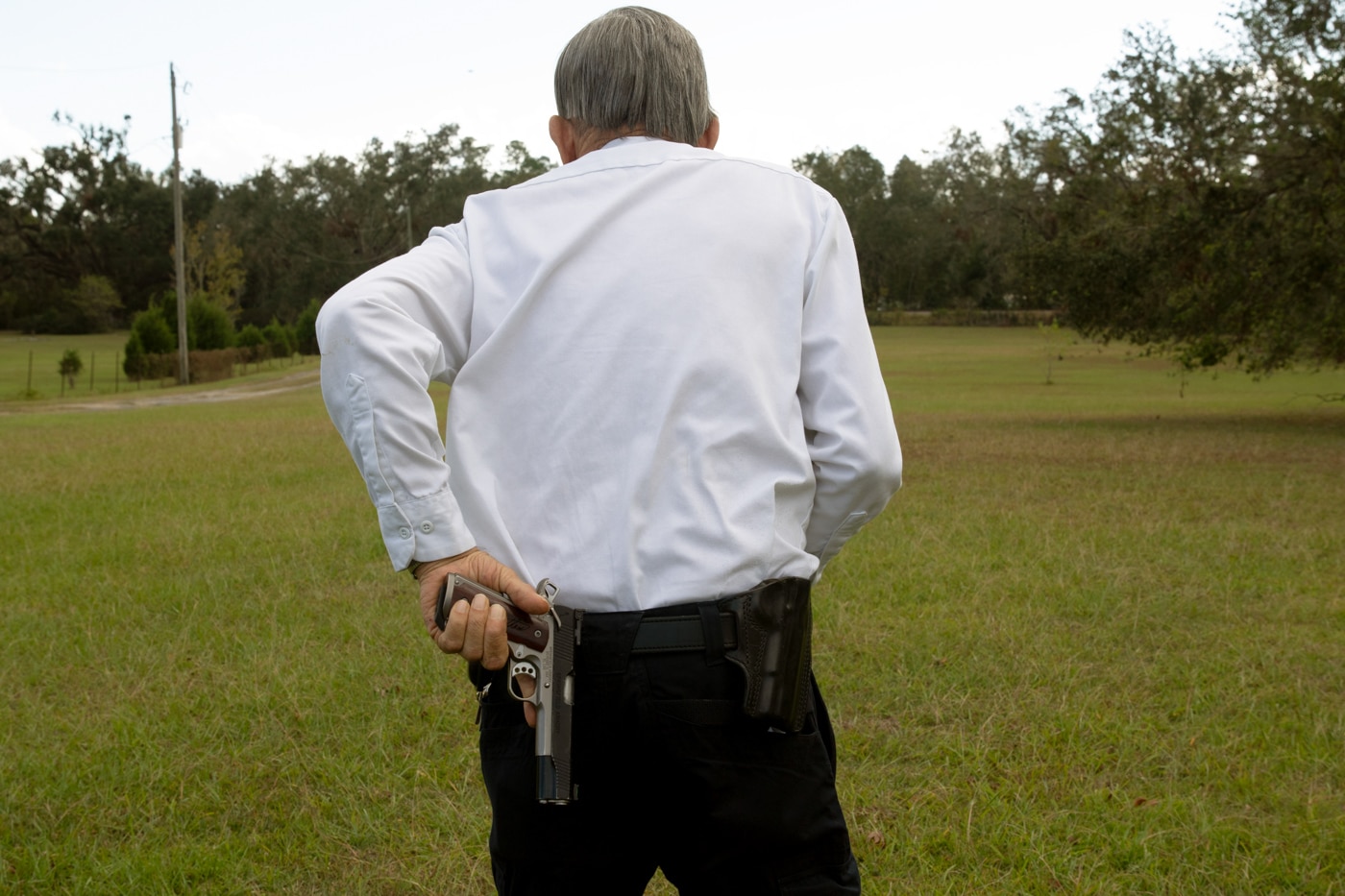
…keep the muzzle pointed down and away from you as you bring it around. Image: Gail Pepin
A thumb safety would be released as explained above.
It is best learned initially with dummy guns and then with empty guns.
And If You Cant Do It…
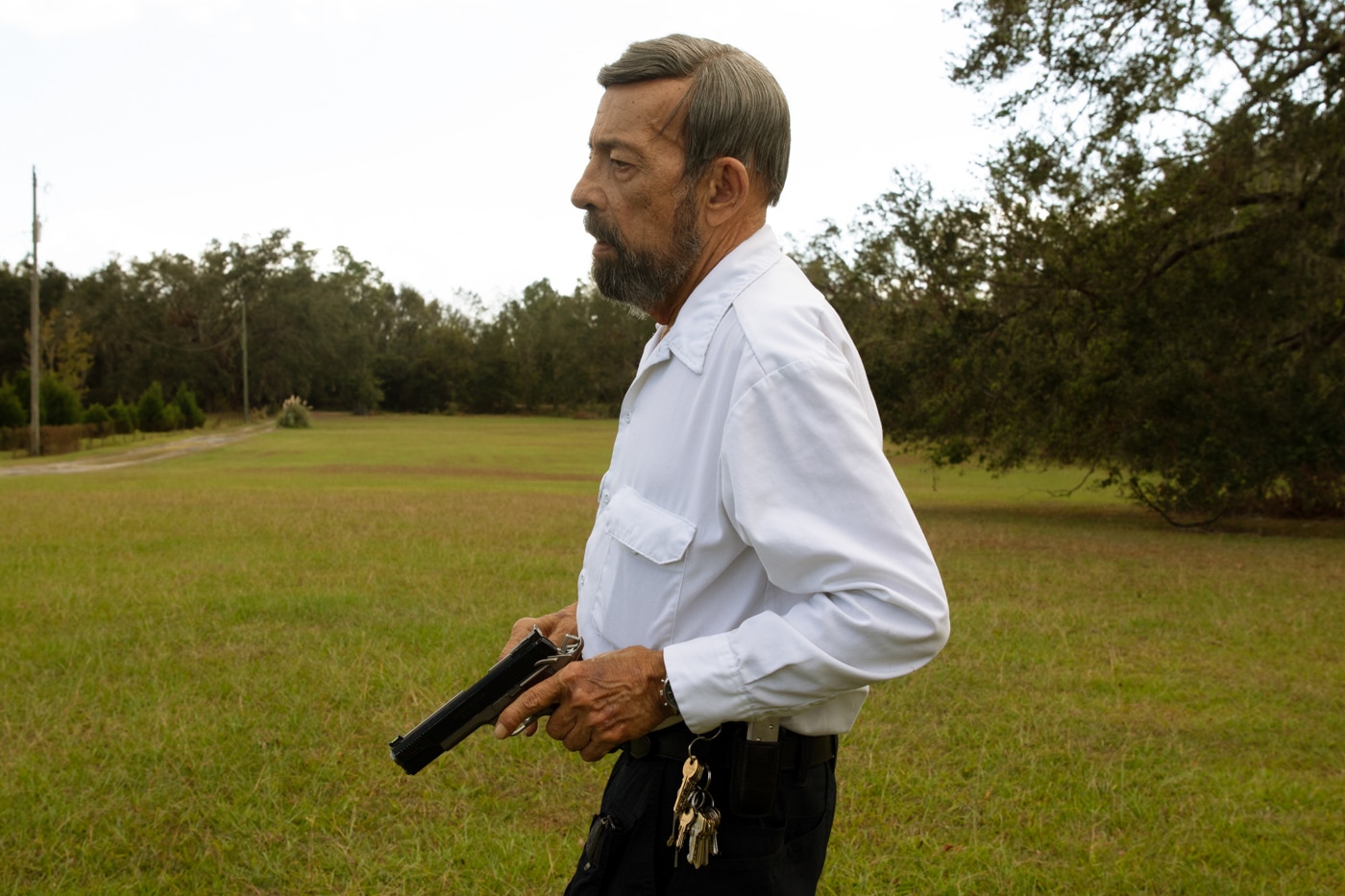
Unless you’re extremely flexible, you’ll have an imperfect grasp like this. Wait until the gun is in front of you… Image: Gail Pepin
Fact of life: not everyone is built for reaching their right hip with their left hand or vice-versa.
Injuries, broad shoulders, weight issues etc.
make it simply impossible for some people.
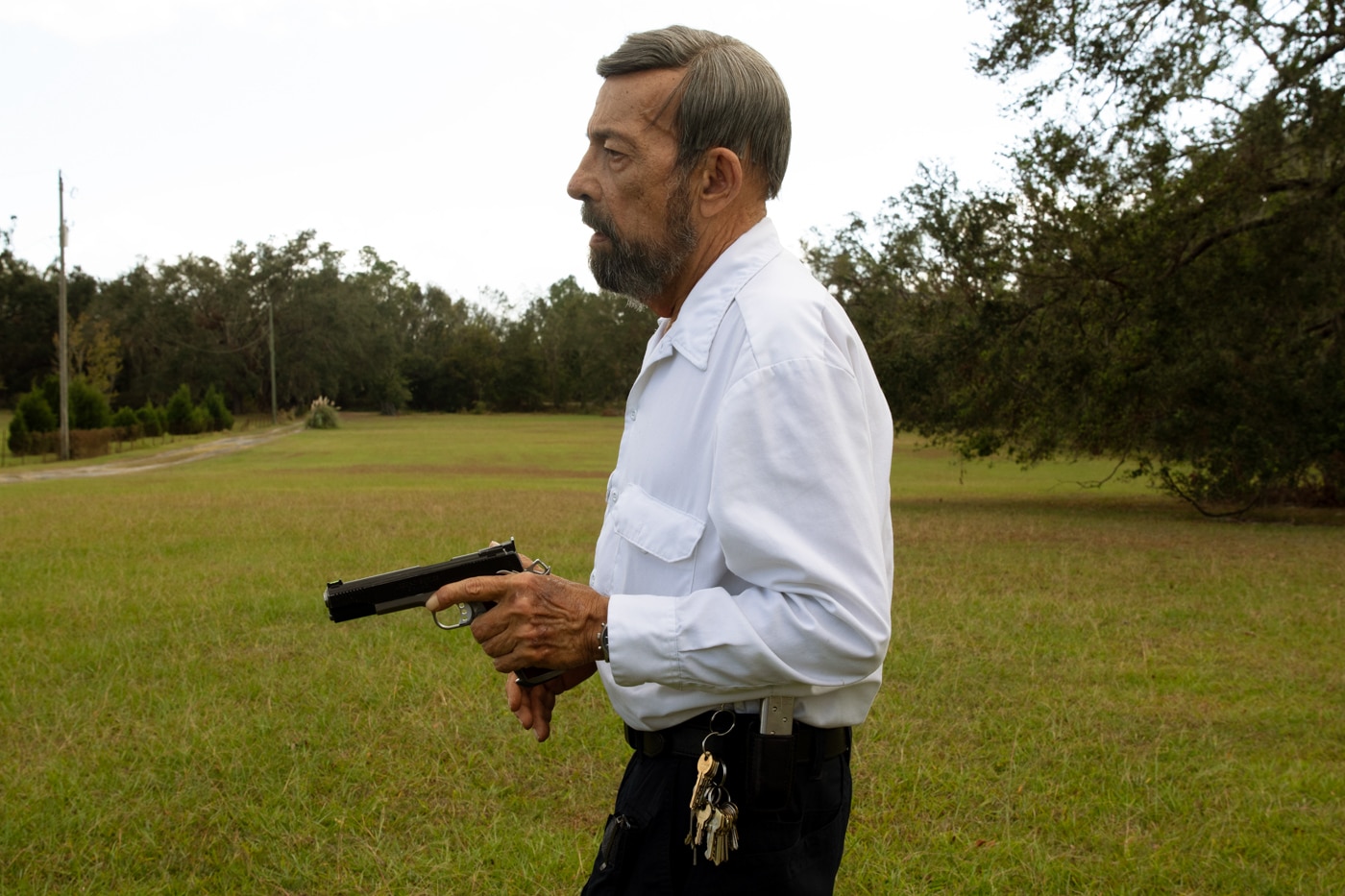
…and ONLY THEN slightly relax your grip so gravity drops the pistol into the most efficient grasp. You’re now ready to effectively return fire. Image: Gail Pepin
(2) Consider carrying a back-up handgun placed where your non-dominant hand can reach it.
The great expert on witness dynamics, Dr. Elizabeth Loftus, called it Weapon Focus.
The eye focuses on the perceived threat, the gun.
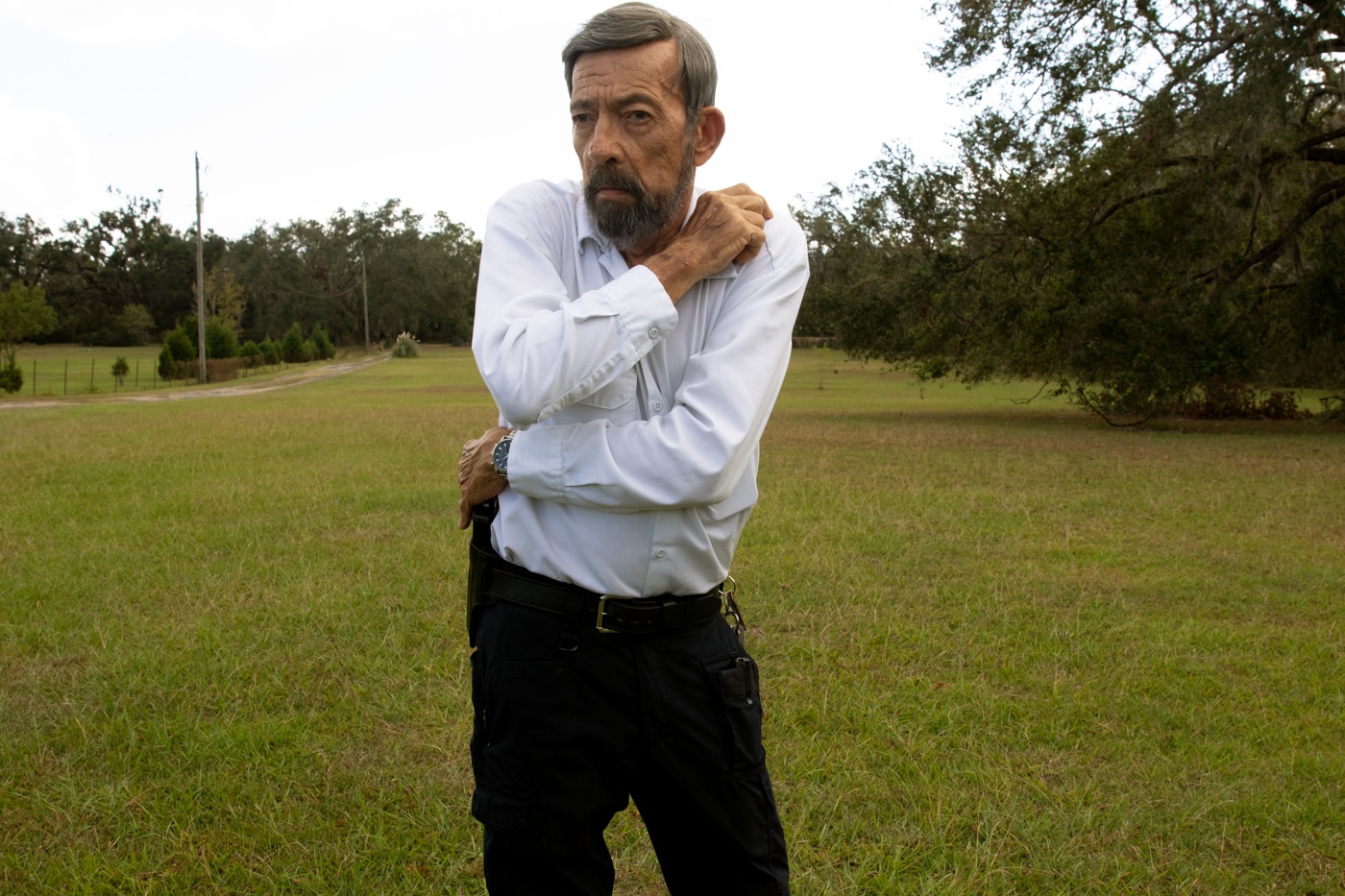
Pivot hip toward reaching hand, dropping drawing arm’s shoulder for maximum range of motion, and grab grip-frame upside-down… Image: Gail Pepin
Where the eyes and the head go, the body follows.
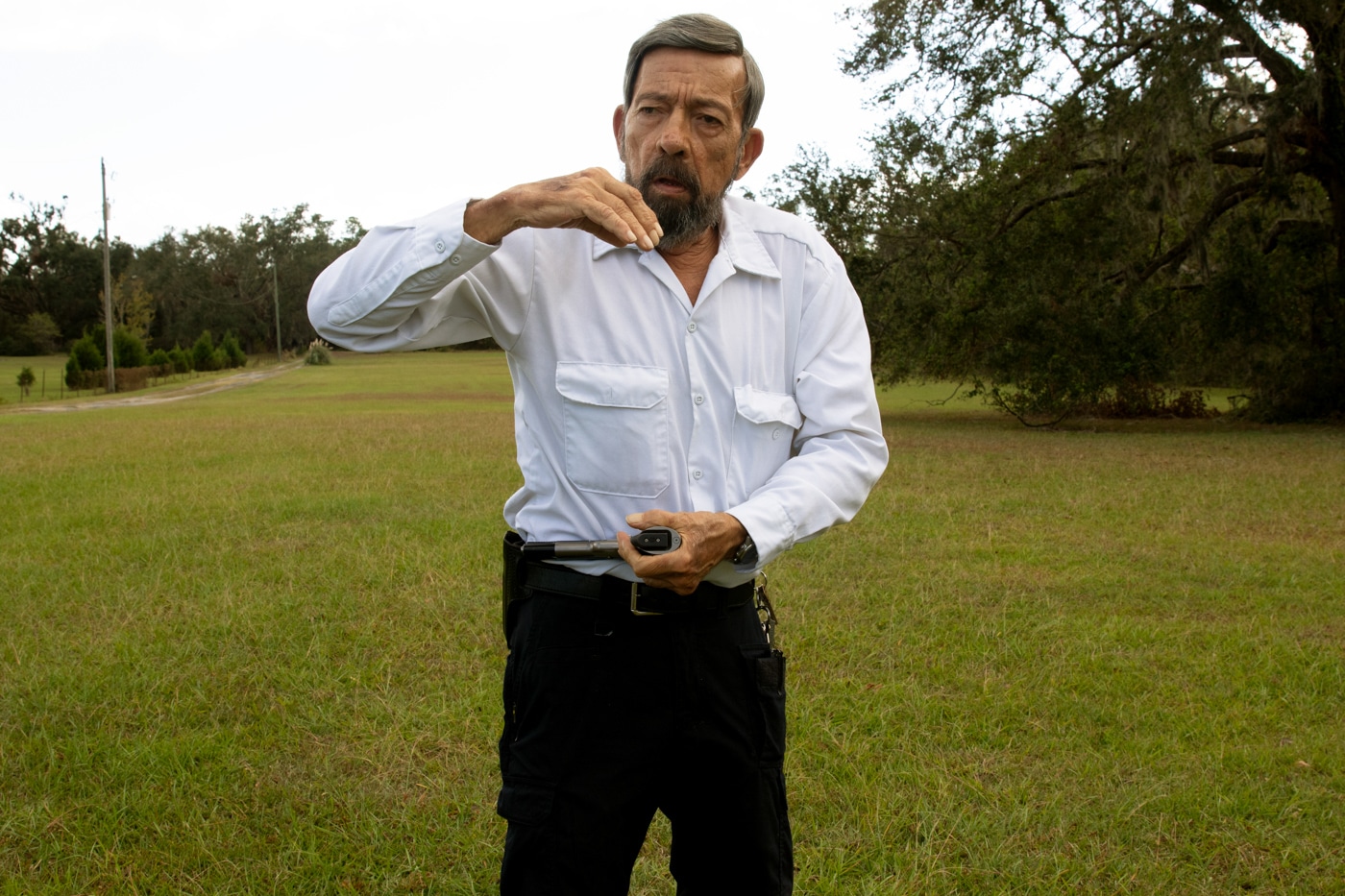
Have top of slide against abdomen parallel to ground, keeping fingers under pistol… Image: Gail Pepin
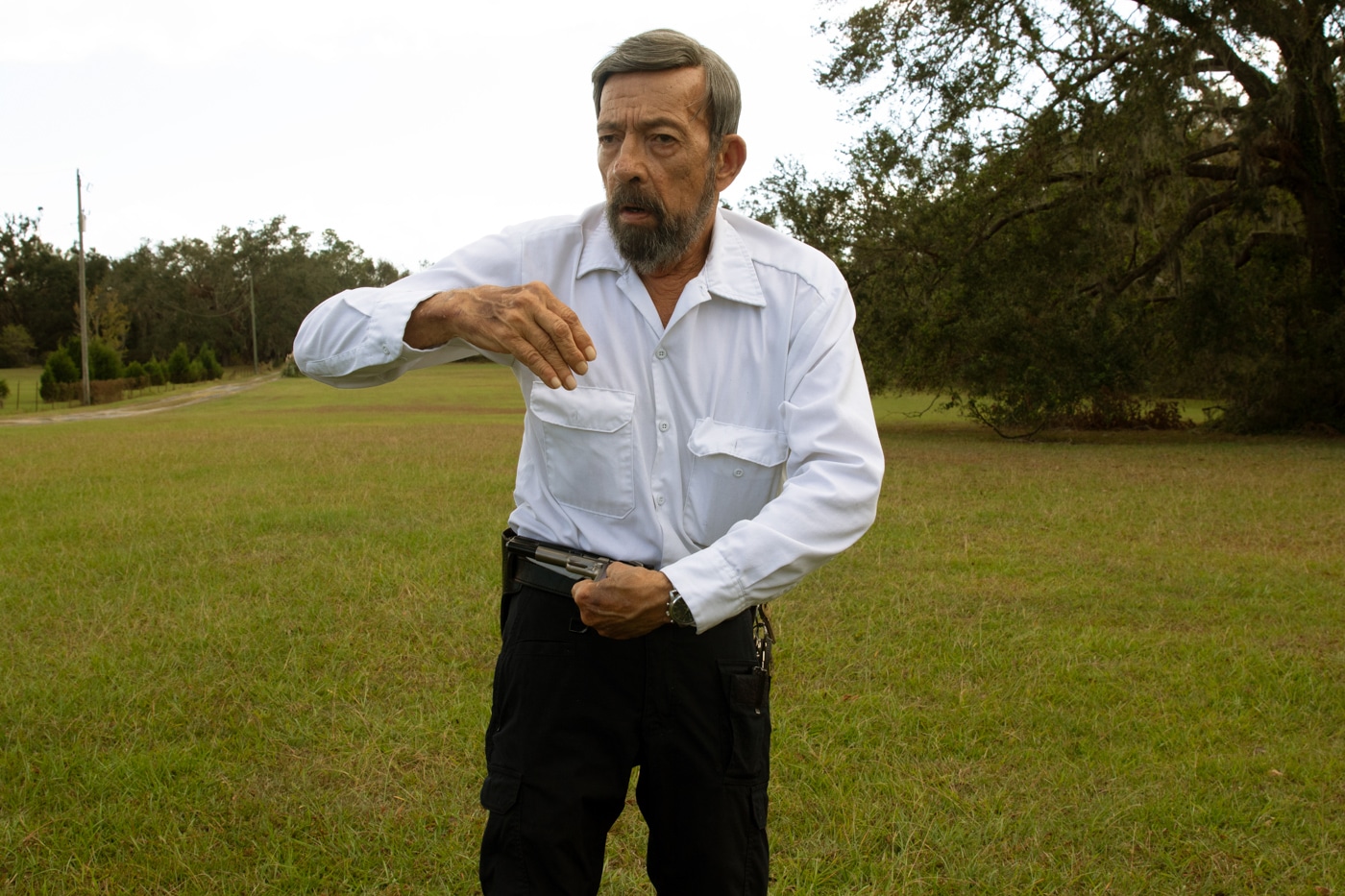
…and rotate palm across butt like this… Image: Gail Pepin
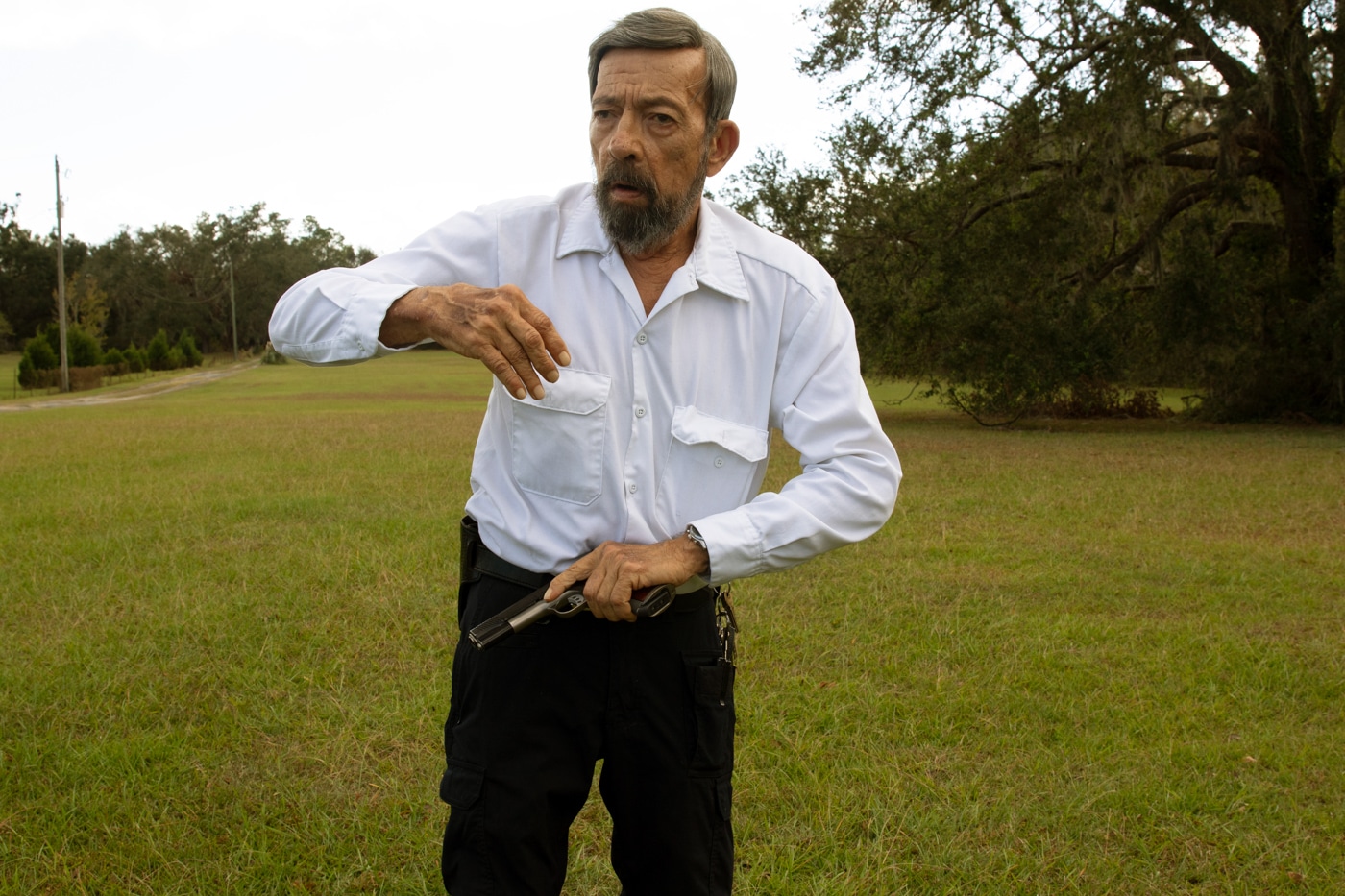
…now take firing grasp… Image: Gail Pepin
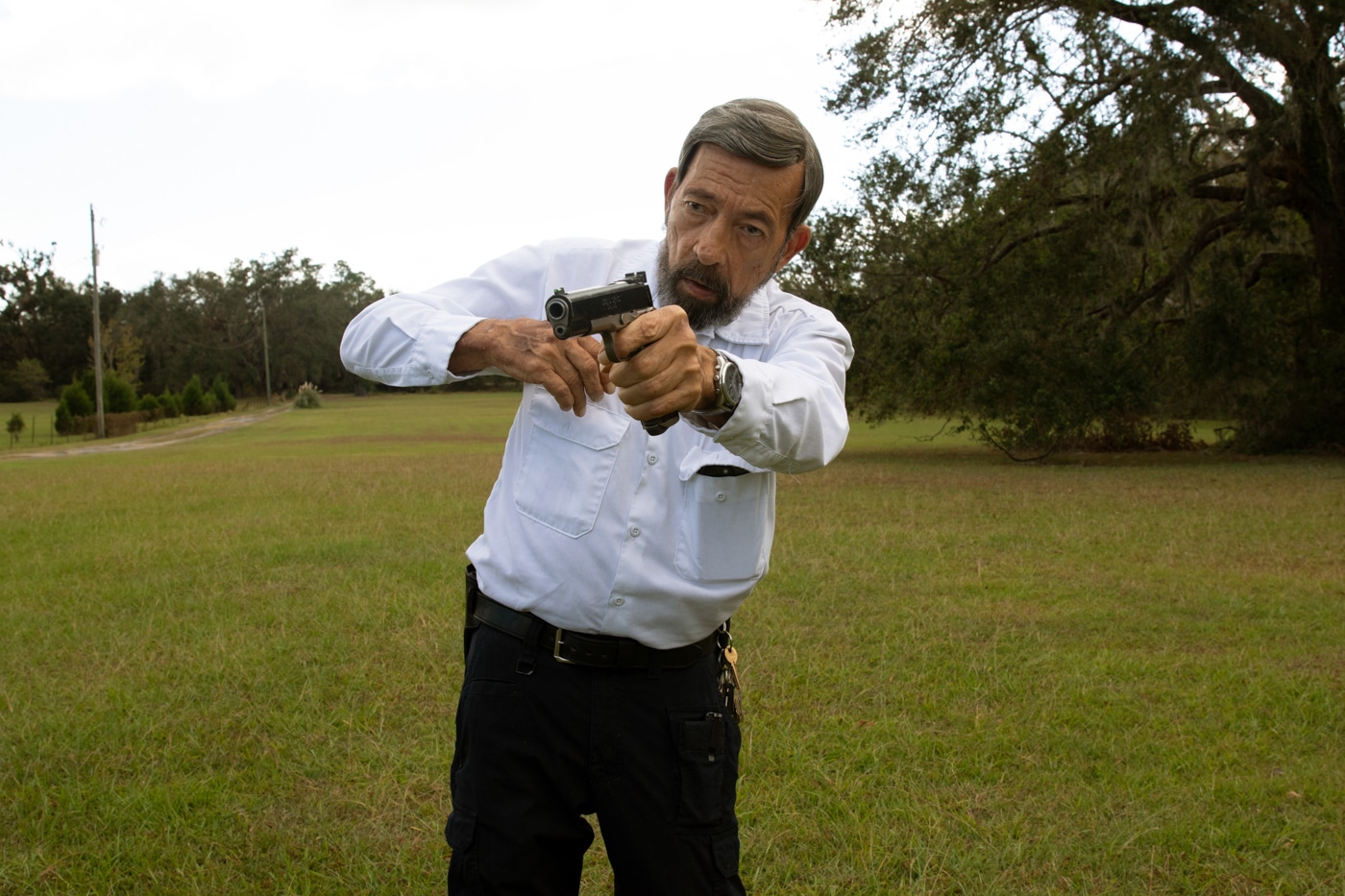
…and you’re in position to return fire, non-dominant-hand only. Image: Gail Pepin

Studies of gunfights suggest that gun hands and arms can be injured. Therefore, it makes sense to learn how to conduct an emergency draw of your defensive pistol with your other hand.




